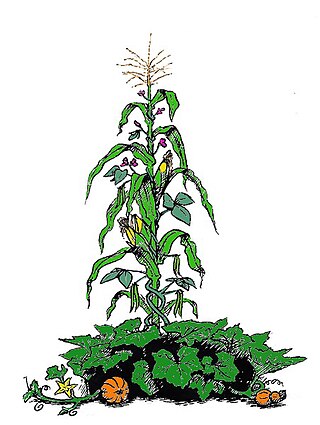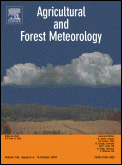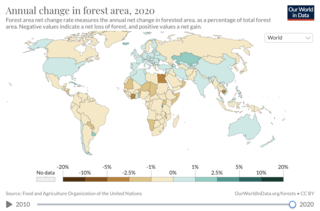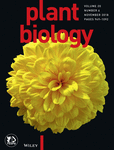
Agricultural science is a broad multidisciplinary field of biology that encompasses the parts of exact, natural, economic and social sciences that are used in the practice and understanding of agriculture. Professionals of the agricultural science are called agricultural scientists or agriculturists.

Desertification is a type of land degradation in drylands in which biological productivity is lost due to natural processes or induced by human activities whereby fertile areas become arid. It is the spread of arid areas caused by a variety of factors, such as climate change and overexploitation of soil as a result of human activity.

Sustainable agriculture is farming in sustainable ways meeting society's present food and textile needs, without compromising the ability for current or future generations to meet their needs. It can be based on an understanding of ecosystem services. There are many methods to increase the sustainability of agriculture. When developing agriculture within sustainable food systems, it is important to develop flexible business process and farming practices. Agriculture has an enormous environmental footprint, playing a significant role in causing climate change, water scarcity, water pollution, land degradation, deforestation and other processes; it is simultaneously causing environmental changes and being impacted by these changes. Sustainable agriculture consists of environment friendly methods of farming that allow the production of crops or livestock without damage to human or natural systems. It involves preventing adverse effects to soil, water, biodiversity, surrounding or downstream resources—as well as to those working or living on the farm or in neighboring areas. Elements of sustainable agriculture can include permaculture, agroforestry, mixed farming, multiple cropping, and crop rotation.

Horticulture is the cultivation of plants in gardens or greenhouses, as opposed to the field-scale production of crops characteristic of agriculture. It includes the cultivation of fruits, vegetables, nuts, seeds, herbs, sprouts, mushrooms, algae, flowers, seaweeds and non-food crops such as grass and ornamental trees and plants. It also includes plant conservation, landscape restoration, landscape and garden design, construction, and maintenance, and arboriculture, ornamental trees and lawns.
Biodynamic agriculture is a form of alternative agriculture based on pseudo-scientific and esoteric concepts initially developed in 1924 by Rudolf Steiner (1861–1925). It was the first of the organic farming movements. It treats soil fertility, plant growth, and livestock care as ecologically interrelated tasks, emphasizing spiritual and mystical perspectives.

The genus Tamarix is composed of about 50–60 species of flowering plants in the family Tamaricaceae, native to drier areas of Eurasia and Africa. The generic name originated in Latin and may refer to the Tamaris River in Hispania Tarraconensis (Spain).

The Three Sisters are the three main agricultural crops of various Indigenous peoples of North America: squash, maize ("corn"), and climbing beans. In a technique known as companion planting, the maize and beans are often planted together in mounds formed by hilling soil around the base of the plants each year; squash is typically planted between the mounds. The cornstalk serves as a trellis for climbing beans, the beans fix nitrogen in their root nodules and stabilize the maize in high winds, and the wide leaves of the squash plant shade the ground, keeping the soil moist and helping prevent the establishment of weeds.

Soil conservation is the prevention of loss of the topmost layer of the soil from erosion or prevention of reduced fertility caused by over usage, acidification, salinization or other chemical soil contamination.
Physical Chemistry Chemical Physics is a weekly peer-reviewed scientific journal publishing research and review articles on any aspect of physical chemistry, chemical physics, and biophysical chemistry. It is published by the Royal Society of Chemistry on behalf of eighteen participating societies. The editor-in-chief is Anouk Rijs,.

Agricultural and Forest Meteorology is a peer-reviewed scientific journal covering research on the relationships between meteorology and the fields of plant, animal, and soil sciences, ecology, and biogeochemistry. The editor-in-chief is Claudia Wagner-Riddle.
Animal-free agriculture, also known as veganic agriculture, stockfree farming or veganic farming, consists of farming methods that do not use animals or animal products.

Agricultural pollution refers to biotic and abiotic byproducts of farming practices that result in contamination or degradation of the environment and surrounding ecosystems, and/or cause injury to humans and their economic interests. The pollution may come from a variety of sources, ranging from point source water pollution to more diffuse, landscape-level causes, also known as non-point source pollution and air pollution. Once in the environment these pollutants can have both direct effects in surrounding ecosystems, i.e. killing local wildlife or contaminating drinking water, and downstream effects such as dead zones caused by agricultural runoff is concentrated in large water bodies.

Animal Biology is a peer-reviewed scientific journal in the field of zoology. It is the official journal of the Koninklijke Nederlandse Dierkundige Vereniging and published on behalf of the society by Brill Publishers. The journal was established in 1872 as the Archives Néerlandaises de Zoologie and renamed Netherlands Journal of Zoology in 1967. It has been known under its current name since 2004.
Acta Agriculturae Scandinavica. Section B. Soil and Plant Science is a peer-reviewed scientific journal published by Taylor & Francis on behalf of the Nordic Association of Agricultural Scientists. It covers environmental sciences, botany, earth sciences, physical geography, ecology, and the soil sciences of relevance to agriculture.

Regenerative agriculture is a conservation and rehabilitation approach to food and farming systems. It focuses on topsoil regeneration, increasing biodiversity, improving the water cycle, enhancing ecosystem services, supporting biosequestration, increasing resilience to climate change, and strengthening the health and vitality of farm soil.

Deforestation is a primary contributor to climate change, and climate change affects forests.

Plant Biology is a peer-reviewed scientific journal of plant biology. The journal was originally established as Berichte der Deutschen Botanischen Gesellschaft in 1883, changed its name to Botanica Acta in 1988. In 1999, the journal renamed itself Plant Biology, and restarted the volume numbering.

The Tijdschrift van de Koninklijke Vereniging voor Nederlandse Muziekgeschiedenis is a peer-reviewed academic journal covering the music history of the Low Countries. It is published by the Koninklijke Vereniging voor Nederlandse Muziekgeschiedenis and the editor-in-chief is Eric Jas. It was established in 1882 as the Tijdschrift der Vereeniging voor Noord-Nederlandsche Muziekgeschiedenis, renamed "Tijdschrift der Vereeniging voor Nederlandsche Muziekgeschiedenis" in 1909. In 1948 the name was changed again to the more general Tijdschrift voor Muziekwetenschap, but in 1960 this reverted to the previous Tijdschrift van de Vereniging voor Nederlandse Muziekgeschiedenis. The journal obtained its current title in 1995 when the society obtained the right to call itself "Royal". The journal is published in two yearly issues, although these are often combined in one special issue covering a single topic.
Soil Science Society of America Journal is a bimonthly peer-reviewed scientific journal publishing research on all aspects of soil science. It was established in 1937 as Soil Science Society of America Proceedings with J. D. Luckett as founding editor-in-chief. The journal obtained its current title in 1973. It is the flagship journal of the Soil Science Society of America and is published on their behalf by Wiley. As of 2013, the journal is only available online.
The Canadian Journal of Animal Science is a quarterly peer-reviewed scientific journal covering research on all aspects of animal agriculture and animal products. It was established in 1921 and is published by Canadian Science Publishing. The current editors-in-chief are Tim McAllister and Greg Penner.













